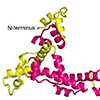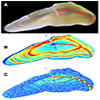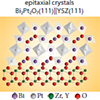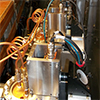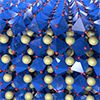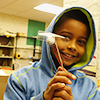|
LAB NOTES: March 2015
Please excuse our construction. The ERL (Energy Recovery Linac) is moving, currently located in the hallway between C-line and F-lines; it is being disassembled and moved to another area of the building where a short return loop is being built for testing. Please watch for forklifts and other movement in the first floor loading dock area and stay in designated areas as clearly marked with signage. While visiting we would be glad to provide your group with a tour of the new planned ERL area and describe how research is advancing here at the lab. Inquire at the User Office or with a CHESS Operator.
Just a reminder: The CHESS Users office will be issuing all radiation badges to CHESS users, Monday through Friday from 8 am to 4:30 pm. When you arrive at CHESS for beamtime please go directly to the CHESS Users office located on the 2nd floor Wilson lab to be badged (follow the signs for CHESS Reception). For users arriving after these hours or on the weekends, please go to CHESS Ops for check-in and badging. CHESS ops is located on the first floor of Wilson Lab.
|


